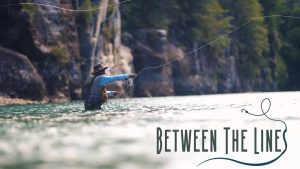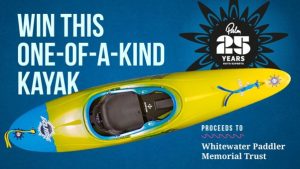Drawing the line between Inspiration and Imitation
This fall, brands came under fire for designs that felt a little too familiar. While far from the first (or last) time a “copy cat” call sounded, it raises the question, where do we draw the line between inspiration and imitation? How can we, as an industry, support innovation and unique design?

Innovation for new products comes from many places, with inspiration found throug desire or need, a problem we attempt to solve, or pre-existing concepts. Imitation, by contrast, occurs when you directly copy an existing solution to a problem rather than develop a unique idea. Drawing the line between inspiration and imitation can be surprisingly difficult. For Matyas Hilgert of Hiko Sport, the designer’s intention is critical. If the goal or essential question driving product development is, “‘Can we improve what is already out there?’ and the answer is yes,” he argues, “then by doing so, you are inherently unique.”
Hilgert reminds us that appearance is only one way to differentiate products. Product performance, functionality, affordability, or sustainability can differ greatly from designer decisions, even if the base aesthetic is similar. In the apparel sector, many brands purchase raw materials from the same sources, placing additional emphasis on product design and quality. Two garments might look similar, but do they perform the same? Do they achieve the same goals in the same way? Frequently, the more advanced or technical a product, the more opportunity for differentiation. Simple splash tops can be more similar than different than, say, dry tops or shorts.
Stand-up paddleboards are another area where similarities can appear to outweigh unique designs, especially inflatables. Scroll through any Paddler’s Guide: Most cruiser boards are 10’6-10’8 long, 29”-32” wide, and 6” tall, with subtle nuances from rail placement and rocker profile to fin boxes, top sheet, and the materials and constructions used.
“Ultimately, we need new materials, ideas, and vision to grow as an industry.”
Materials are frequently a driving factor in innovation and product differentiation, but it is a never-ending game of catch-up as what was groundbreaking becomes standard. Take, for example, drop stitch. In barely a decade, drop stitch transitioned from rarity to the norm for quality inflatables. In 2020, Starboard SUP, among others, debuted inflatables with a woven, not knitted, drop stitch core for lighter, stiffer, stronger, and more responsive boards. More companies are quickly following suit. Soon, a woven drop stitch will become the industry standard until the next innovation in materials or construction is found.
Not all brands have the resources to lead innovation, and no single brand will ever be the sole innovator in their field. “Everyone takes some influence from other sources; it’s natural to do so in design. The difference is how close your ideas are to your peers versus sources that are a few steps removed,” argues Palm Equipment’s Paul Robertson. Robertson, like many, frequently looks to other industries for advances and ideas to adapt to paddlesports. “Looking sideways” is a critical source of inspiration. But adapting influences differs from copying a product, especially one within the industry.
The paddlesport industry is small. Most major players in individual sectors are friends who have been in the game for many years. Rather than relying on patents or trademarks, many believe in developing products that are substantially different rather than substantially similar as a matter of respect. Yet, as Hilgert points out, “I can respect someone by staying far away from their design. Or I show someone respect by building upon their idea—basically gratifying that the idea is a good one.”
To quote Oscar Wilde, “Imitation is the sincerest form of flattery.” However, the second half of his statement is often left unsaid: “that mediocrity can pay to greatness.” A lack of originality suggests not understanding the problem you are working to solve. Take knock-off products, which bring the potential for poorly-made items to fail, endangering users. Gero Priebe of Hobie Kayak Europe points out that even when not life-threatening, a negative experience with a knock-off can turn potential enthusiasts away from the sport. Priebe views supporting brick-and-mortar stores with knowledgeable sales teams as a key way to educate consumers on choosing quality products and the right products for them.
“I can respect someone by staying far away from their design. Or I show someone respect by building upon their idea—basically gratifying that the idea is a good one.”
Ultimately, we need new materials, ideas, and vision to grow as an industry. “{Borrowing} heavily from others stifles innovation and ultimately reduces consumer choice, which is not good for anyone in the long run,” reminds Robertson. Rather than investing time and resources into substantially similar products, we are better served by ideas inspired by our needs and experiences. While imitations can drive innovation, we must reward those taking on the risk and expense of R&D to set the bar. We reward them through industry awards, such as the Paddle Sport’s Show Product of the Year Awards, which annually showcases new innovations across market sectors. We reward them by being knowledgeable about our history and using that knowledge to educate consumers, encouraging them to support the brands putting in the work.
It’s up to all of us to find the line and keep moving the standard forward. As we draw inspiration from each other, the goal should always be to do something better than it’s been done before.




